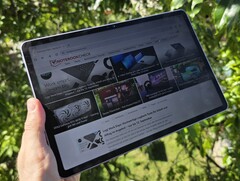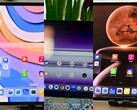The verdict of our Huawei MatePad 11.5 (2025) PaperMatte Edition is certainly open to debate, but very few users are likely to use their tablet primarily outdoors. Then again, anyone who only uses the low-reflection display on the sofa and not in the park or a light-filled library is missing out on the benefits of the matte screen.
This is because PaperMatte screens offer more than just advantages over glossy panels. In short, potential buyers should carefully considering whether the trade-off between better outdoor readability and slightly reduced image quality and color vibrancy is worthwhile based on their personal usage habits.
Android tablets with PaperMatte generally have lower vibrancy and contrast
Our reviews of the MatePad 11.5 (2025) and its predecssor show that the etched surface structure of the PaperMatte panel visibly reduces the brilliance of color reproduction. Colors appear less vibrant, and image sharpness is not as clear as on a glossy display.
The high black level also negatively impacts contrast. Compared to high-quality, non-matter IPS displays, the ratio of brightness and black tone reproduction is significantly lower on PaperMatte screens. In our review of the Huawei MatePad 11.5 (2025), we only reached a contrast ratio of 629:1. In our display measurement, the grayscale on PaperMatte panels is also slightly color cast, which impairs color accuracy.
For outdoor enthusiasts, however, the "PaperMatte" surface will be a highlight, as reflections are greatly reduced. In everyday use, this matte finish proves to be very effective outdoors.
Source(s)
Review of the MatePad 11.5 (2025)




















